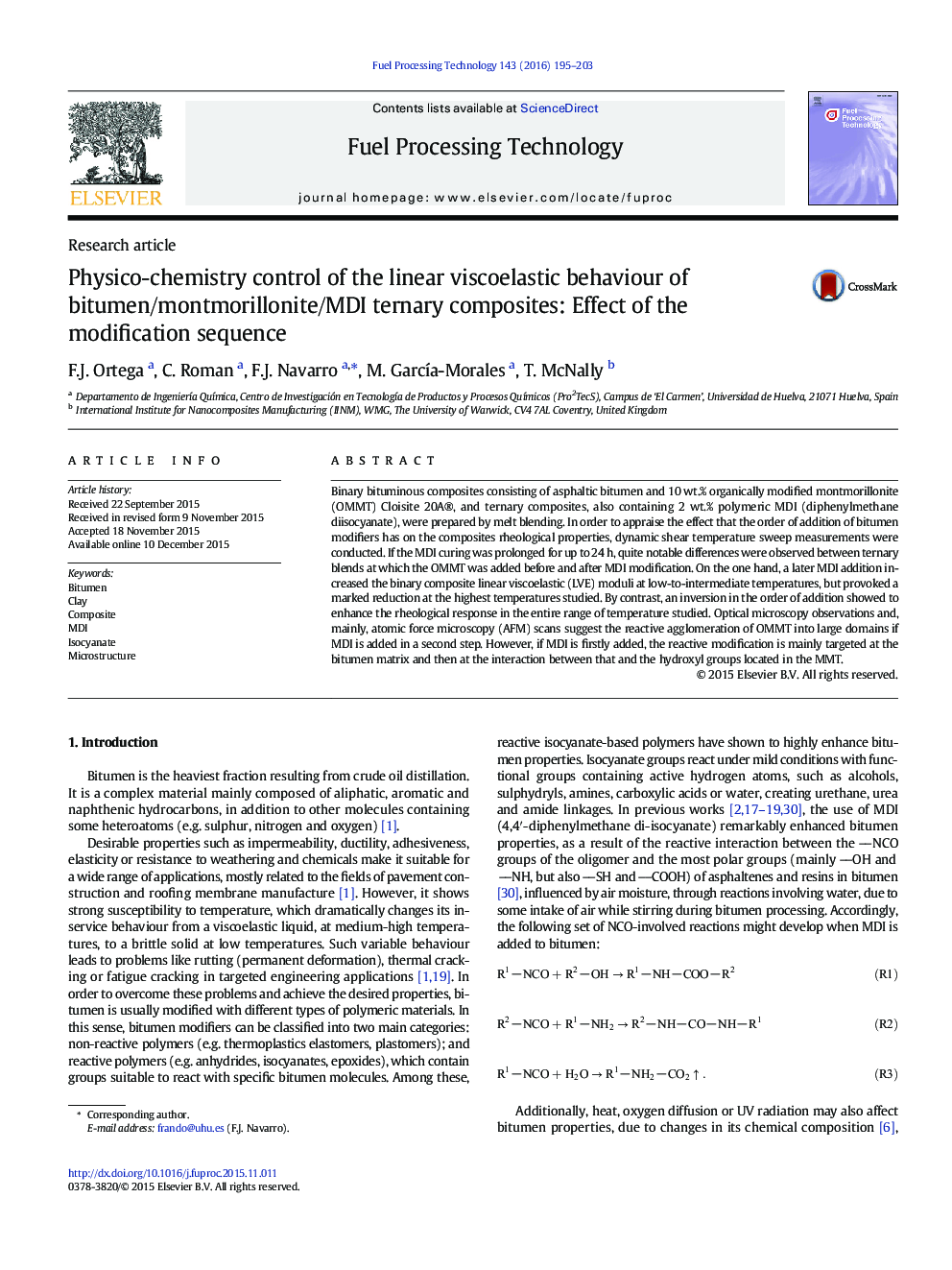| Article ID | Journal | Published Year | Pages | File Type |
|---|---|---|---|---|
| 209214 | Fuel Processing Technology | 2016 | 9 Pages |
•Preparation of binary and ternary bituminous composites with MDI and Cloisite 20A®•C20A® clay addition improves thermo-mechanical stability of the resulting composite.•MDI addition and low shear stirring structurally destabilize the composites.•Preferential reactivity of MDI with reactive groups in C20A over those in bitumen•The order of addition of C20A and MDI radically changes the LVE response.
Binary bituminous composites consisting of asphaltic bitumen and 10 wt.% organically modified montmorillonite (OMMT) Cloisite 20A®, and ternary composites, also containing 2 wt.% polymeric MDI (diphenylmethane diisocyanate), were prepared by melt blending. In order to appraise the effect that the order of addition of bitumen modifiers has on the composites rheological properties, dynamic shear temperature sweep measurements were conducted. If the MDI curing was prolonged for up to 24 h, quite notable differences were observed between ternary blends at which the OMMT was added before and after MDI modification. On the one hand, a later MDI addition increased the binary composite linear viscoelastic (LVE) moduli at low-to-intermediate temperatures, but provoked a marked reduction at the highest temperatures studied. By contrast, an inversion in the order of addition showed to enhance the rheological response in the entire range of temperature studied. Optical microscopy observations and, mainly, atomic force microscopy (AFM) scans suggest the reactive agglomeration of OMMT into large domains if MDI is added in a second step. However, if MDI is firstly added, the reactive modification is mainly targeted at the bitumen matrix and then at the interaction between that and the hydroxyl groups located in the MMT.
